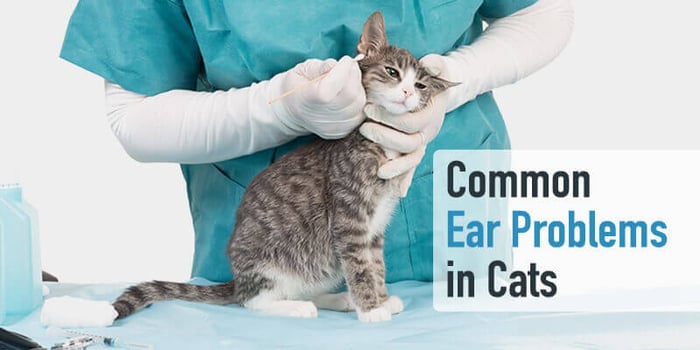Ear problems in cats are quite common, and any part of the ear - the outer, middle, and inner ear - can be affected.
Ear issues that are commonly observed in cats are mainly because of infections and injuries due to foreign objects.
The causes, symptoms, and preventive tips are discussed in this article.
Causes and Symptoms of Ear Problems in Cats
The most common ear problems are caused due to infections, hematoma, and the presence of foreign objects. Let's understand these symptoms in detail below.
Infections
Ear infections can be caused by harmful microorganisms, including bacteria and fungi, and ear mites.
The following are symptoms of an ear infection:
- Repeated itching and scratching of the ears
- Unnecessary head shaking
- Redness in the ear
- Black or yellowish, foul-smelling discharge from the ears
- Wax buildup on or near the ear canal
- Disorientation or loss of balance
- Reduced hearing or deafness

Hematoma
Hematoma refers to the mass of blood clot remaining in a tissue or an organ because of a broken blood vessel; in this case, hematoma occurs in the ears.
The following are the symptoms:
- Swelling and redness of the ear
- Droopy ear flap
- Unnecessary head shaking
- Tilting the head on one side most of the time
Presence of foreign objects
As cats enjoy going outdoors (eg, garden), grass or grass blades might sometimes get stuck in the ear canal, causing severe pain.
The most common sign that can be observed during such situations is tilting the head to one side.
How to prevent ear problems in cats?
- Keep the surroundings clean to prevent the growth of ear mites and other potentially infectious agents.
- Examine the cat’s ears routinely for signs of infections such as swelling, discharge, and the collection of dirt and debris. Such routine checks can help identify a potential ear infection in the early stages and have it treated before it worsens.
- Consult a vet to learn how to clean a cat’s ears.
- Never insert any cleaning device into the ear canal of a cat, unless advised.
If you suspect your pet is sick, consult your vet immediately.
Himalaya offers Erina-EP Shampoo and Erina-EP Powder to control ectoparasites (external parasites) like ticks, fleas, and lice in pets.
Source: All About Pets. Common Ear Problems in Cats. 2020;1(1):7.
Check out the Pet Care section for more blog posts on pets' health, diet, and so on.
Explore the Himalaya Wellness blog for more useful articles.
 Himalaya Global Holdings Ltd. (Our Parent)
Himalaya Global Holdings Ltd. (Our Parent)





